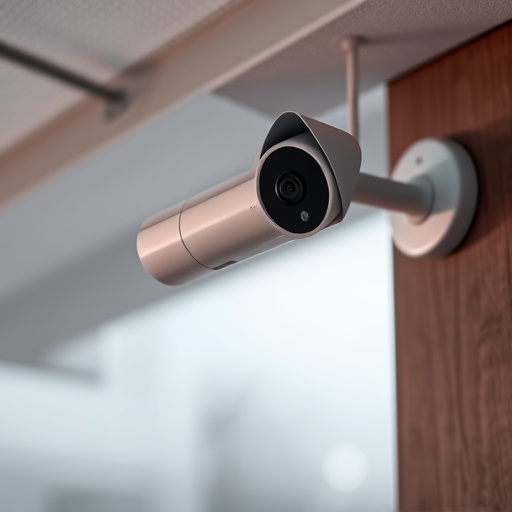Installing multiple fake security cameras requires careful consideration of power sources. Battery-powered options offer flexibility for temporary setups, while AC power is reliable for permanent installations. Wireless charging technology provides a clean and professional look, simplifying maintenance. Solar-powered cameras are eco-friendly but susceptible to limited sunlight. The best method depends on setup size and future needs, balancing aesthetics, cost, and reliability.
When installing multiple fake security cameras, power options are a crucial consideration for maintaining a convincing security presence. This guide explores various dummy camera power sources, from traditional AC power connections to innovative wireless charging and solar-powered alternatives. Understanding the pros and cons of each method allows homeowners and businesses to make informed decisions, ensuring optimal performance and visual deterrence without compromising aesthetics.
- Power Sources for Dummy Cameras
- Battery vs. AC Power Connections
- Wireless Charging Options Overview
- Solar-Powered Imitations: Pros and Cons
- Choosing the Best Fake Camera Power Method
Power Sources for Dummy Cameras
When it comes to powering dummy security cameras, or fake security cameras as they’re often called, there are several reliable options available, especially when installing multiple devices. For a single camera, traditional wiring is straightforward and ensures a steady power supply. However, for larger setups with multiple dummy cameras spread across a property, wired connections can become cumbersome and unsightly. Here’s where wireless power sources come into play, offering a practical solution for installing multiple fake security cameras.
Wireless options include battery-powered cameras that are designed to last for extended periods or rechargeable models that can be easily topped up. These methods eliminate the need for complex wiring, making it easier to position cameras in hard-to-reach areas or places where aesthetics are important. Rechargeable batteries are a popular choice as they reduce maintenance and offer the flexibility to move cameras around when needed, providing both functionality and convenience during the installation process of multiple fake security cameras.
Battery vs. AC Power Connections
When considering dummy security cameras for an extensive setup with multiple devices, understanding power options becomes crucial. The primary distinction lies between battery-powered and AC (alternating current) power connections. For installations involving several fake security cameras, battery operation offers significant flexibility, especially in areas without readily accessible power outlets or when running cables is impractical. Rechargeable batteries ensure continuous surveillance, making it ideal for temporary setups or remote locations.
On the other hand, AC power provides a reliable and consistent energy source, suitable for permanent installations. Installing multiple dummy security cameras with AC connections simplifies wiring and reduces battery replacement efforts. This option is cost-effective in the long run but may require initial installation costs for setting up power outlets and cables, especially in larger homes or commercial spaces where installing Multiple fake security cameras is essential for comprehensive surveillance.
Wireless Charging Options Overview
Wireless charging options are transforming how we power our devices, and this trend is also making its way into the world of dummy security cameras. For those looking to install multiple fake security cameras around their property, wireless charging offers a convenient and aesthetically pleasing solution. Traditional wired cables can be unsightly and cumbersome, especially when mounting cameras at various heights or in hard-to-reach areas. Wireless charging pads can be discreetly placed near each camera, eliminating the need for messy wiring and ensuring a clean, professional installation.
This technology is particularly beneficial for homeowners who want to create a comprehensive security network without compromising on design. With wireless charging, you can seamlessly integrate multiple dummy cameras throughout your home or business, each powered by a simple pad hidden from view. This not only streamlines the installation process but also makes maintenance and troubleshooting more straightforward. Whether you’re aiming for a high-tech or subtle approach to home security, wireless charging options provide flexibility and convenience for installing multiple fake security cameras.
Solar-Powered Imitations: Pros and Cons
Solar-powered imitations of security cameras are gaining popularity among homeowners looking for an affordable and eco-friendly option. One of the main advantages is their energy efficiency; these devices harness solar energy during the day, ensuring continuous operation with no additional electricity costs. This feature makes them ideal for installing multiple fake security cameras around your property without worrying about power outlets or hidden wiring.
However, there are some drawbacks to consider. Solar-powered cameras might not be as reliable in areas with limited sunlight or during prolonged cloudy periods, potentially leading to reduced performance. Additionally, while they offer a cost-effective solution for basic surveillance needs, advanced features such as night vision or motion detection might require separate power sources, negating some of the initial benefits.
Choosing the Best Fake Camera Power Method
When it comes to installing multiple dummy security cameras, power options become a key consideration. The best approach depends on your specific setup and needs. For a simple, standalone camera, a battery-powered option might be sufficient, offering flexibility in placement without the hassle of running wires. However, for larger systems with numerous cameras, hardwiring or using a wireless power solution could be more suitable.
Hardwiring provides a reliable and permanent connection, ideal for fixed installations. Conversely, wireless power transmitters allow for easy deployment of multiple cameras without the tangles of cables, making them perfect for areas where mobility or installation complexity is a factor. Evaluating your setup and future requirements will help guide your decision on the optimal dummy camera power method.
When it comes to installing multiple dummy security cameras, understanding your power options is key. From traditional AC power connections to innovative solar energy, each has its advantages. Wireless charging and battery-powered alternatives offer flexibility, while considering factors like weather resistance and runtime for outdoor setups. By evaluating your specific needs, whether it’s a single camera or an extensive network, you can make an informed decision to ensure reliable and effective surveillance.
